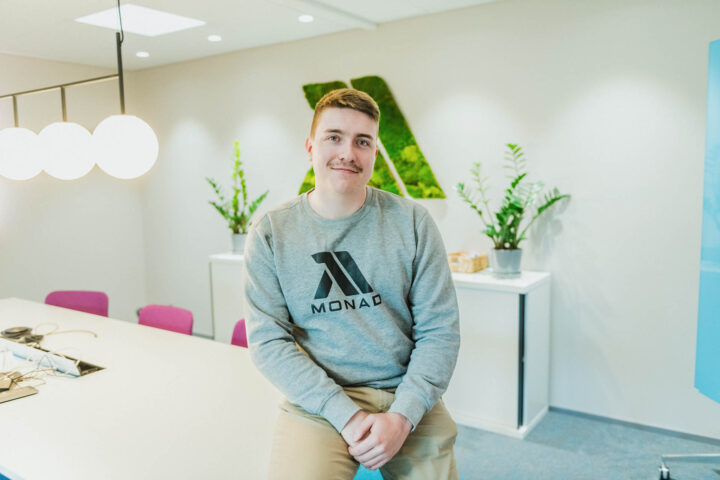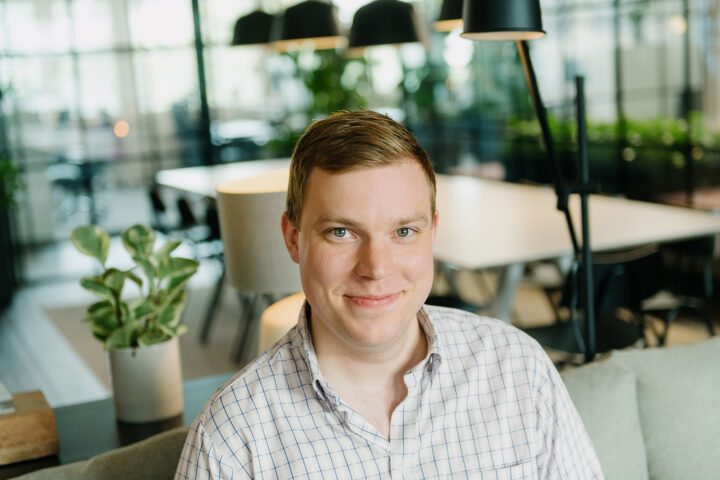
Design thinking is a mindset that refers to the strategic, empathetic, cognitive, and practical approaches designers use when creating something new. The key themes related to design thinking include human-centeredness, creative ideation, iterative creation processes, agile prototyping, and collaboration among different functions and stakeholders within an organization. In practical design processes, design thinking manifests as human-centric ways of solving challenges and problems. It effectively creates digital products and services that cater to both business and customer needs and expectations. At the core of design thinking is understanding people – for example, understanding service customers requires their involvement in the design process. Involvement is most fruitful when it occurs throughout the design process: from initial understanding to iterating solution concepts, refining, and testing.
From Understanding to Solution Validation
In essence, our design process consists of several stages that can be used individually or together in a non-linear process. The process is always iterative.
- Understanding business goals and constraints
- Understanding customers, users, and/or other stakeholders
- Defining the problem
- Generating solution hypotheses
- Iterating and validating solution hypotheses through rapid prototyping
- Creating investment calculations and assessing their profitability
- Finalizing plans while involving stakeholders
Understanding the needs of users and other significant stakeholders, such as in an application development project, leads to better user experiences, which increases software usage. When the entire team, from developers to designers, understands the needs of different groups, it leads to more successful solutions, happier users, reduces costly changes to software structures, and streamlines the entire development process.
How Does the Design Process Progress in Practice?
Let’s consider a hypothetical example. The team’s task is to create a smoother way to book appointments at a health clinic. Together with the clinic management and those responsible for the care process, the central goal is identified as reducing the workload on employees, freeing up time for medical staff to focus on patient care, which is assumed to improve the customer experience. This supports the company’s strategy of offering competitively higher quality service cost-effectively. Key design metrics and drivers are derived from this, such as the average time taken for a single appointment booking, customer experience with the booking process’s smoothness, and customer experience during the care session. These metrics help evaluate the solution’s impact and value to the company and serve as the basis for decisions made during the design phase.
Customer Understanding: In addition to understanding business goals, understanding the needs and pain points of service participants, in this case, patients and medical staff, is required. The team interviews medical staff and patients, observes the workflow at the clinic to understand challenges and improvement opportunities. For example, questions like these could be asked to different participants of the service:
- What is the most time-consuming or frustrating part of the appointment booking process?
- What patient information is required before booking an appointment?
- How do patients prefer to book appointments?
Ideation: The team generates initial solution hypotheses, considering solutions such as:
- Simplifying the appointment booking process with guided steps for patients
- Sending automated reminders about appointments through notifications, text messages, and emails
- Creating a user interface for medical staff to easily communicate with patients
Prototyping and Testing: The design team creates rough prototypes of the most promising solutions. For example, they could develop a prototype of a mobile app and test it with clinic patients to gather feedback and make changes based on the feedback.
Investment Calculations and Profitability Assessment: At this stage, required development investments would be outlined, along with their relationship to benefits like time saved by employees, minimized misunderstandings and errors, and improved customer experience.
Design Finalization: The team refines the designs to align with the company’s branding and practices and validates these with customers and other users of the service.
Using the designs created through the aforementioned design process, an appointment booking application can be developed that meets both business and customer needs, leading to a better customer experience and reduced appointment cancellations. By gathering all this knowledge and understanding before the application is even launched, time and money are saved. Even during active development, a designer remains present to ensure that the implementation aligns with the designs and the value created by the service is realized in the final product.
Streamline as Needed
Design thinking and the derived design processes are not one-size-fits-all methods. Regardless of the project’s nature, it’s important to remember that methods, processes, and tools are there to serve you, not the other way around. Therefore, it’s sensible to adapt and streamline the approach as needed for the situation. This is why every product or service design process should be tailored to fit the organization’s needs and practices, not the other way around.
Summary
Design thinking is an effective method for problem-solving. To create successful products and services, you must understand customers and other relevant stakeholders. Solving the right problem saves time and money. Prototypes of refined ideas are a cost-effective way to test solution viability. Design thinking doesn’t imply a linear, fixed process – adapt as necessary, but remember iteration.
Monad is Your Partner
The methods described above are routine for us, and one reason why our clients appreciate working with us and why the solutions we provide receive praise from their users. Get in touch if you’re interested in creating or developing your services cost-effectively with the foundation of skilled design work!

Let’s talk
Together, we can go through your situation and needs so that we can make a proposal on how to continue.
Antti Riikonen, CEO
+358 50 480 2426
[email protected]
More from our pen



